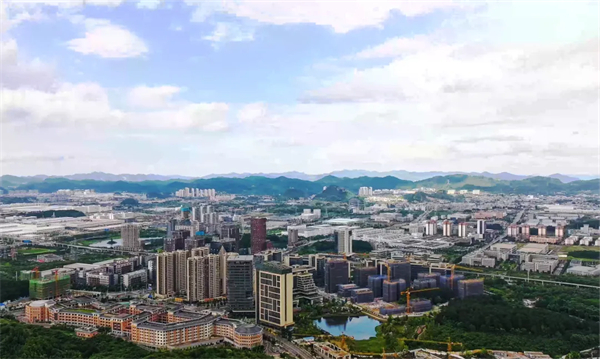

A view of the Guizhou Science City * Sci-Tech Innovation Valley. [Photo/WeChat of Guiyang HIDZ]
The Guizhou Science City * Sci-Tech Innovation Valley in Southwest China's Guizhou province was officially unveiled on July 17, marking a new chapter in innovation and entrepreneurship for the science city.
The science city, a cornerstone of Guizhou Science City's technological innovation zone, is designed as a benchmark project for creativity and invention. It is built around the concept of "One Park, One Valley, One Center."
The "One Park" refers to the Guizhou Science and Technology Innovation Park, the "One Valley" is the Nanyuan Sci-Tech Valley, and the "One Center" is the Xingchen Innovation Center.
Together, these components form a comprehensive research complex that integrates R&D incubation with the commercialization of results, creating a diversified innovation space.
The Guizhou Science City * Sci-Tech Innovation Valley focuses on developing the "3+1+N" high-tech service industry model, which refers to three core business areas, one series of application scenarios, and numerous key platforms.
Centered around the needs of scientists and young entrepreneurs, the project is designed to be an all-encompassing innovation community that includes spaces for research and development, leisure, and social interaction.
The community will feature expert apartments, science estates, international schools, high-end hospitals, and lifestyle amenities such as science parks, academic exchange centers, vibrant leisure hubs, and libraries, fostering a strong sense of belonging among its residents.
Guizhou Science City is home to 27 national-level R&D platforms, two national-level incubation centers, four publicly listed companies, eight national technologically-advanced "little giant" enterprises, and 103 national high-tech enterprises.
With over 5 percent of its industrial enterprises' revenue invested in R&D, Guizhou Science City has driven the commercialization of 569 technological achievements, generating an output value of 38.7 billion yuan ($5.30 billion).